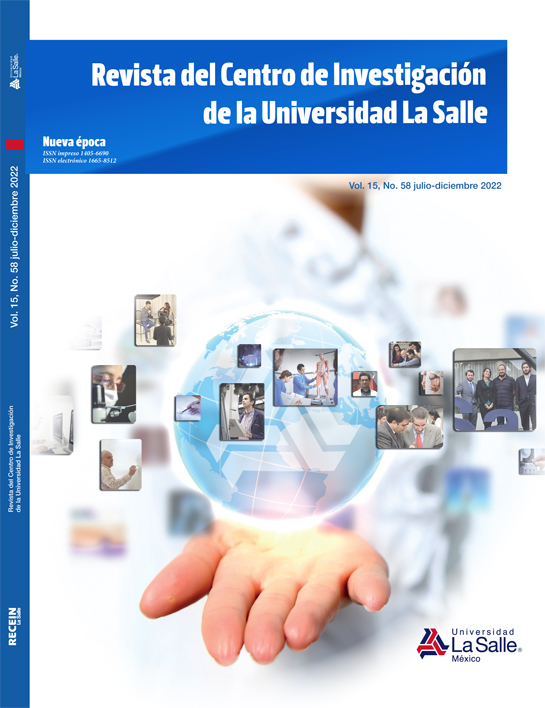Modelling dyads of emotions via sentiment analysis 325
Main Article Content
Resumen
Este artículo presenta una nueva metodología para cuantificar la probabilidad y magnitud de combinaciones de emociones -denominadas díadas- a través del análisis de sentimientos que proporciona probabilidades a priori de las emociones básicas, necesarias para mostrar la presencia de díadas en perfiles de personas. Clasificamos estas características -probabilidad y magnitud- de las díadas en seis grupos (máximo, muy alto, alto, medio, bajo, muy bajo) con el fin de identificar las díadas que tienen más impacto en lo que llamamos en este trabajo perfiles positivos, negativo, neutro y combinado. Los perfiles positivos presentan principalmente Amor, mientras que los perfiles negativos presentan Desprecio y Arrepentimiento. En general, la magnitud de las díadas primarias es mayor que su probabilidad, no así con las díadas secundarias y terciarias donde su probabilidad es mayor que su magnitud.
Descargas
Detalles del artículo

Esta obra está bajo licencia internacional Creative Commons Reconocimiento-NoComercial-CompartirIgual 4.0. Esta revista se encuentra bajo la licencia de Creative Commons, por tanto, los autores, al postular su artículo, lo adhieren a dicha licencia.
El autor puede disponer de su artículo para su archivo en repositorios institucionales o en páginas web personales, con la referencia y agradecimientos a la fuente donde se ha publicado.
Citas
https://www.cicling.org/micai/rcs-local/2019_148_5/Emotion%20Recognition%20for%20Education%20using%20Sentiment%20Analysis.pdf
Dang, N. C., Moreno-García, M. N., and De la Prieta, F. (2020). Sentiment analysis based on deep learning: A comparative study. Electronics, 9(3), 483.
https://doi.org/10.3390/electronics9030483
Hochschild, A. R. (1979). Emotion work, feeling rules, and social structure. American journal of sociology, 85(3), 551-575.
https://doi.org/10.1086/227049
Kim, E., and Klinger, R. (2018). A survey on sentiment and emotion analysis for computational literary studies. arXiv preprint arXiv:1808.03137.
10.17175/2019_008
Liu, B. (2012). Sentiment analysis and opinion mining. Synthesis lectures on human language technologies, 5(1), 1-167.
https://doi.org/10.2200/S00416ED1V01Y201204HLT016
Liu, B., and Zhang, L. (2012). A survey of opinion mining and sentiment analysis. In Mining text data (pp. 415-463). Springer, Boston, MA.
10.1007/978-1-4614-3223-4_13
Liu, B., Tang, S., Sun, X., Chen, Q., Cao, J., Luo, J., and Zhao, S. (2020). Context aware social media user sentiment analysis. Tsinghua Science and Technology, 25(4), 528-541.
10.26599/TST.2019.9010021
Matalon, Y., Magdaci, O., Almozlino, A., and Yamin, D. (2021). Using sentiment analysis to predict opinion inversion in Tweets of political communication. Scientific reports, 11(1), 1-9.
https://doi.org/10.1038/s41598-021-86510-w
Mohammad, S. M. (2017). Word affect intensities. arXiv preprint arXiv:1704.08798.
Mohammad, S., and Kiritchenko, S. (2018). Understanding emotions: A dataset of tweets to study interactions between affect categories. In Proceedings of the Eleventh International Conference on Language Resources and Evaluation (LREC 2018).
https://aclanthology.org/L18-1030.pdf
Mohammad, S. M. and Turney, P. D. (2010). Emotions evoked by common words and phrases: Using Mechanical Turk to create an emotion lexicon. In Proceedings of the NAACL-HLT Workshop on Computational Approaches to Analysis and Generation of Emotion in Text, LA, California.
https://aclanthology.org/W10-0204.pdf
Mohammad, S. M. and Turney, P. D. (2013). Crowdsourcing a word–emotion association lexicon. Computational Intelligence, 29(3):436–465.
https://doi.org/10.1111/j.1467-8640.2012.00460.x
Nahar, L., Sultana, Z., Iqbal, N., and Chowdhury, A. (2019). Sentiment analysis and emotion extraction: a review of research paradigm. In 2019 1st International Conference on Advances in Science, Engineering and Robotics Technology (ICASERT) (pp. 1-8). IEEE.
10.1109/ICASERT.2019.8934654
Plutchik, R. (1989). Measuring emotions and their derivatives. In The measurement of emotions (pp. 1-35). Academic Press.
https://doi.org/10.1016/B978-0-12-558704-4.50007-4
Plutchik, R. (1994). The psychology and biology of emotion. HarperCollins College Publishers.
https://psycnet.apa.org/record/1993-98997-000
Plutchik, R. (2001). The nature of emotions: Human emotions have deep evolutionary roots, a fact that may explain their complexity and provide tools for clinical practice. American Scientist, 89(4), pp. 344-350.
https://www.jstor.org/stable/27857503
Ponce, L. K., and Cordelier, B. (2019). Publicaciones racionales o emocionales en comunidades de marca en Facebook-El caso Starbucks México. RETOS. Revista de Ciencias de la Administración y Economía, 9(17), 109-126.
https://doi.org/10.17163/ret.n17.2019.07
Raya-Ríos, S. D. (2017). Temas Selectos de Minería de Texto. Tesis de maestría en la Universidad Nacional Autónoma de México.
https://repositorio.unam.mx/contenidos/temas-selectos-de-mineria-de-textos-184288?c=b7JJ6Y&d=false&q=*:*&i=1&v=1&t=search_0&as=0
Rodríguez-Esparza, L. J., Barraza-Barraza, D., Salazar-Ibarra, J., and Vargas-Pasaye, R. G. (2019). Index of Suicide Risk in Mexico using Twitter. Journal of Social Researches, 5(15), 1-13.
10.35429/JSR.2019.15.5.1.13
Wang H., Lu, Q., Mok, H.M.K., Fu, L. and Tse, W.M. (2007). A hyperspherical transformation forecasting model for compositional data. European Journal of Operational Research, 179(2), 459-468
https://doi.org/10.1016/j.ejor.2006.03.039
Wang, L., Niu, J., and Yu, S. (2019). Sentidiff: Combining textual information and sentiment diffusion patterns for twitter sentiment analysis. IEEE Transactions on Knowledge and Data Engineering, 32(10), 2026-2039.
 English
English


